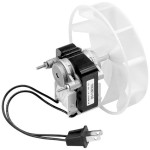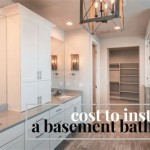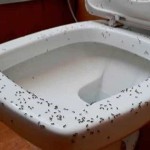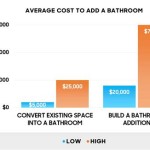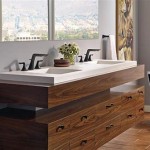Best Lighting For The Bathroom: A Comprehensive Guide
Bathroom lighting is a critical element in creating a functional and aesthetically pleasing space. A well-lit bathroom enhances safety, facilitates grooming tasks, and sets the desired ambiance. Poor lighting, conversely, can lead to difficulties with tasks like shaving and applying makeup, as well as creating a generally uninviting atmosphere. This article explores the key aspects of bathroom lighting, providing a comprehensive guide to selecting the best options for different needs and bathroom layouts.
Effective bathroom lighting requires a layered approach, incorporating different types of fixtures to achieve optimal illumination. This approach addresses the many purposes a bathroom serves, from relaxation to practical hygiene. Ignoring the principles of layered lighting often results in a space that is either too harsh or too dim, failing to meet the user's diverse requirements.
Understanding the Importance of Layered Lighting
Layered lighting utilizes different types of light sources to achieve a balanced and functional bathroom environment. The three primary layers are ambient lighting, task lighting, and accent lighting. Each plays a vital role in creating a well-lit and aesthetically pleasing space.
Ambient Lighting: This provides overall illumination for the bathroom. Often referred to as general lighting, it ensures the entire space is well-lit, allowing for safe navigation and comfortable use. Ambient lighting typically originates from ceiling fixtures, such as recessed lights, chandeliers, or flush-mount lights. Careful consideration should be given to the fixture's brightness and color temperature to avoid harsh or dull lighting.
Task Lighting: This focuses on illuminating specific areas for functional tasks, such as shaving, applying makeup, or reading. Typically, task lighting is positioned around the vanity and mirror. Sconces mounted on either side of the mirror are a popular choice, as they provide even illumination across the face, minimizing shadows. Overhead vanity lights are also an option, but they can cast shadows if not positioned and angled correctly. The color rendering index (CRI) of task lighting is crucial, as it affects the accuracy of color perception, which is especially important for makeup application.
Accent Lighting: This is used to highlight specific features in the bathroom, such as artwork, architectural details, or decorative elements. Accent lighting adds depth and dimension to the space, creating visual interest and enhancing the overall ambiance. Examples include spotlights directed at a piece of art, strip lighting under cabinets, or uplights that emphasize textures. Accent lighting is often dimmable, allowing for further customization of the bathroom's mood.
Choosing the Right Light Fixtures
Selecting the appropriate light fixtures is crucial for achieving optimal bathroom lighting. Several factors need to be considered, including the size and style of the bathroom, the desired level of illumination, and the specific tasks that will be performed in the space.
Recessed Lighting: These fixtures are installed directly into the ceiling, providing a clean and modern look. They are excellent for ambient lighting, distributing light evenly throughout the bathroom. Recessed lights are available in various sizes and beam angles, allowing for targeted illumination of specific areas. It's important to choose recessed lights that are specifically rated for wet locations to prevent electrical hazards.
Vanity Lights: Designed for task lighting around the mirror, vanity lights come in a variety of styles, including sconces, light bars, and pendant lights. Sconces are a popular choice for their symmetrical and flattering illumination. Light bars provide a more contemporary look and can be mounted above or beside the mirror. Pendant lights can add a touch of elegance, but they should be positioned carefully to avoid obstructing the view in the mirror.
Flush-Mount Lights: These fixtures are mounted directly against the ceiling, providing a simple and unobtrusive source of ambient lighting. Flush-mount lights are a good option for bathrooms with low ceilings, as they don't take up much vertical space. They are available in a wide range of styles, from traditional to contemporary.
Chandeliers and Pendant Lights: While often associated with more formal spaces, chandeliers and pendant lights can add a touch of luxury to a bathroom. They are typically used as accent lighting or to provide ambient lighting in larger bathrooms. When selecting a chandelier or pendant light for a bathroom, it's essential to choose a fixture that is rated for wet locations and positioned safely away from water sources.
LED Strip Lighting: This versatile lighting option can be used for both task and accent lighting. LED strips can be installed under cabinets, along the edges of mirrors, or behind bathtubs to create a soft and ambient glow. They are energy-efficient, long-lasting, and available in a range of colors and brightness levels.
Key Considerations for Bathroom Lighting Design
Designing effective bathroom lighting involves more than simply selecting the right fixtures. Several other factors need to be considered to ensure a well-lit and functional space. These include light placement, color temperature, and safety regulations.
Light Placement: The placement of light fixtures is crucial for achieving optimal illumination and minimizing shadows. Task lighting should be positioned around the mirror to provide even illumination across the face. Ambient lighting should be distributed evenly throughout the bathroom to avoid dark corners. Accent lighting should be strategically placed to highlight specific features.
Color Temperature: This is measured in Kelvin (K) and describes the warmth or coolness of the light. Warm light (2700K-3000K) has a yellowish hue and is often preferred for creating a relaxing and inviting atmosphere. Cool light (4000K-5000K) has a bluish hue and is often preferred for task lighting, as it provides better visibility. For bathroom lighting, a color temperature of around 3000K-4000K is generally recommended, providing a balance of warmth and clarity.
Brightness: The brightness of light fixtures is measured in lumens. The appropriate number of lumens for a bathroom depends on the size of the space and the desired level of illumination. As a general guideline, a small bathroom (30-40 square feet) requires around 2000-4000 lumens, while a larger bathroom (50-100 square feet) requires around 4000-8000 lumens. Dimmers can be installed to adjust the brightness of the lights as needed.
Safety Regulations: Bathrooms are considered wet locations, so it's crucial to choose light fixtures that are specifically rated for wet environments. These fixtures are designed to protect against moisture and prevent electrical hazards. Furthermore, electrical work in bathrooms should always be performed by a qualified electrician to ensure compliance with local building codes.
Mirror Placement and Lighting: Consider the placement of mirrors in relation to your light sources. A mirror placed directly opposite a window can reflect natural light effectively, but also create glare at certain times of the day. Similarly, placement of lights, especially overhead, should be carefully planned to avoid reflecting directly into the mirror, as this can be both unflattering and uncomfortable.
Energy Efficiency: Modern bathroom lighting design increasingly prioritizes energy efficiency. LED lighting has emerged as the dominant technology for this purpose. LEDs consume significantly less energy than traditional incandescent or halogen bulbs, while offering comparable or superior light output. They also have a much longer lifespan, reducing the frequency of bulb replacements. When selecting bathroom lighting, opt for LED fixtures with a high energy efficiency rating to minimize energy consumption and lower utility bills.
Dimmers and Smart Lighting: Installing dimmers on bathroom lights allows for adjustable light levels, enabling users to customize the ambiance based on their needs and preferences. Dimmers are particularly useful for creating a relaxing atmosphere during baths or for providing softer lighting during nighttime visits to the bathroom. Smart lighting systems offer even greater control, allowing users to adjust light levels, color temperature, and even set lighting schedules via a smartphone or voice assistant. This level of customization can enhance both the functionality and ambiance of the bathroom.
Natural Light Maximization: Whenever possible, incorporate natural light into the bathroom design. Large windows, skylights, or even sun tunnels can bring natural light into the space, reducing the need for artificial lighting during the day. Natural light not only saves energy but also creates a more pleasant and healthy environment. When designing a bathroom, consider the orientation of the space and the placement of windows to maximize natural light penetration.
Maintenance Considerations: When selecting bathroom light fixtures, also consider the ease of maintenance. Fixtures that are difficult to clean or require frequent bulb replacements can become a nuisance over time. Opt for fixtures with smooth surfaces that are easy to wipe down and choose LED bulbs that have a long lifespan. Additionally, consider the accessibility of the light fixtures for bulb replacements and other maintenance tasks.
Budgeting for Bathroom Lighting: Bathroom lighting costs can vary significantly depending on the types of fixtures selected, the complexity of the installation, and the use of smart lighting technology. Before starting a bathroom lighting project, it's essential to establish a budget and prioritize the most important aspects of the design. Task lighting around the vanity is typically the most critical area, followed by ambient lighting. Accent lighting can be added as budget allows. Comparing prices from different retailers and considering energy-efficient options can help to control costs.

How To Choose The Best Lighting Fixtures For Bathrooms This Old House

Bathroom Lighting 6 Best Types Cost And Which To Choose Modernize

20 Of The Best Bathroom Lighting Ideas For 2025 Badeloft

Best Bathroom Lighting For Your Home The

8 Bathroom Light Fixtures To Try In Your Home

10 Top Tier Bathroom Lighting Ideas For The Win

How To Choose The Best Vanity Lighting

Best Bathroom Lighting For Your Home The

Best Lighting For The Bathroom

Bathroom Lighting Ideas For Every Style Redesign


